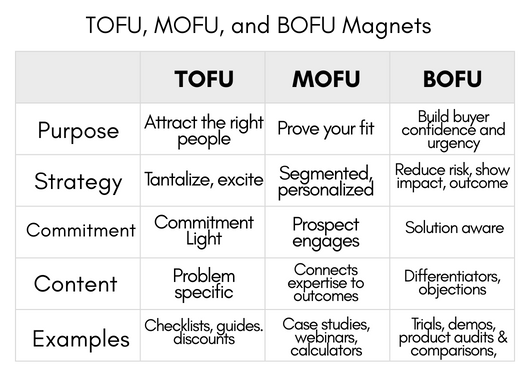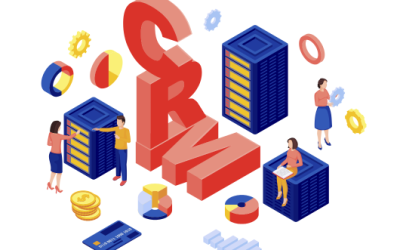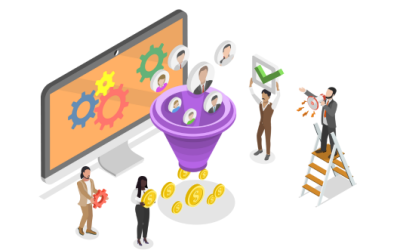Your CRM is a great tool to help you build relationships with prospects and customers. In past blogs, we have learned how to guide prospects through the Buyer’s Journey and to educate your buyer, and build loyalty from a new customer. Your CRM is much more than a marketing and sales tool. It can be used by your internal team to support your ongoing client relationships, to gather client feedback given to your staff, and to communicate internally about the client’s status during service delivery.
So, your prospect says “Yes” and gives you the green light to start your scope of work. Does your CRM send actions to your team notifying them of the new client? Can you track each project’s status from stage to stage? In a robust CRM, you can set up a series of automation to track projects, set up team actions and deadlines, and communicate with your team and clients just like with prospects.
Failure to engage immediately with your new customer can lead to “Disconnect” which occurs when an organization lacks a process or uses one inconsistently. The result is slow customer communications and service. How you engage and solidify your new relationship is a combination of high touch and high tech and using automation to support your personal initiatives is the key.
How to Avoid Disconnect?
To bridge the disconnect and provide the customer with the best service and product possible, everyone in your organization who interacts with the customer needs to use the CRM to report progress and customer feedback. Think about your customer’s lifecycle and list the stages of your cycle. A one-time sale is different than a recurring sale so adapt what we say to your customer’s experiences. You and your team touch your customers from the “Greenlight” through service delivery, project completion, a service contract, and a “happy client phone call.”
Your team is busy achieving project milestones. Tracking progress and catching exceptions are the keys to great customer service and satisfaction. Businesses lose opportunities, reputation, and customers when there is a disconnect. A good CRM not only helps a business turn prospects into customers but also helps the internal team to communicate with each other and nurture customers. It takes everyone to build a customer’s loyalty!!`
Managing Customers with Your CRM
Great customer service occurs when your team communicates easily, has access to the same customer information and history and you and the team know project deadlines.
CRMs help your team communicate cohesively and efficiently
When everyone is working in a silo, there is a very good chance that you are losing revenue due to inefficiency and, possibly, mistakes. For example, if you have a 90-day process after a new customer sale that involves installation by the installer, follow-up by the salesperson, and invoicing by the accountant, a CRM can help streamline this process. The installer is notified that an installation is scheduled. This will give them time to prepare and make sure they have the materials for the installation. When the installer orders materials, starts, and completes the job, they can make note of it in the CRM, so the salesperson can follow up. After each follow-up, the salesperson can record the customer satisfaction in the CRM, so the accountant knows when to invoice. Any of the steps in the process done prematurely can strain the customer’s journey and possibly cause it to veer off the path. A CRM helps your team communicate internally so that your customer can have peace of mind and know the project is being done well.
It helps everyone provide customers with great service
Great customer service starts with knowing the customer and how to meet its needs. Customers also feel like they are getting great customer service when they feel like everyone in the business knows what is going on. One of the worst feelings for a customer is getting 3 different answers from 3 different people within a business. For example, a customer called customer service at a fence company to ask about a warped board on a recent install. If the person who answers the email or the phone does not know the customer’s history, they may make assumptions that result in the wrong information. If they had a CRM where everyone that interacts with customers has access, they could see that the install was done two weeks prior. They could also see that the customer’s fence is under warranty, and, therefore, make arrangements for the fence to be repaired at no cost. A CRM helps each team member easily look up a customer’s history and accurately help them.
It helps everyone work together to meet business goals
Your team may be on the same page regarding business goals. Everyone has their responsibilities and knows what is expected. However, it can be challenging if each team member or department is tracking its own goals by itself. This makes it difficult and even frustrating when the pursuit of business goals is siloed. A CRM can track and report by project stage providing you with critical insights about your customers and your service delivery. When everyone uses the CRM, they can see how they are working together towards achieving the business goals.
Conclusion
Customer relations goes beyond sales and marketing, and a CRM is not just for sales and marketing. It is for everyone who interacts with the customer. This means the accountant, project manager, and the installer (replace these names with your team) need to be using the CRM too. They need to communicate together and cohesively to ensure customers’ needs are being met and that business goals are being achieved.
If you would like to use your CRM for customer relations and internal communication, we would love to talk to you. You can contact us at 301-332-0613 or fill out the contact form.






